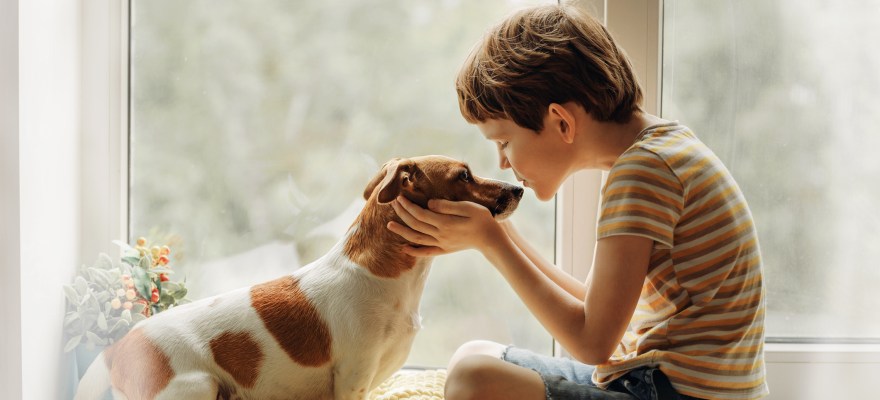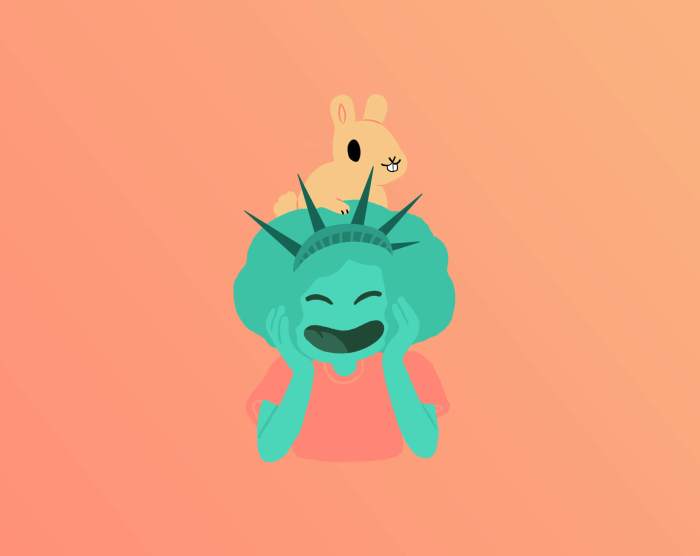
Pets are essential members of our families. And the benefits pets provide kids are immeasurable. From teaching life lessons to fostering empathy and compassion, pets are not only wonderful companions, but help kids thrive in so many ways.
In fact, the American Academy of Child and Adolescent Psychiatry says that developing positive feelings about pets can contribute to a child’s self-esteem and self confidence, and even aid in the development of trusting relationships with others.
In other words, pets can help a child feel happy.
Amy Attas, a veterinarian who founded City Pets in Manhattan agrees that pets can have a profound impact on a child’s mental health. She cited a study in the International Journal of Environmental Research and Public Health that shows growing up with a pet can bring social, emotional and educational benefits to children.
“Pets provide emotional support for children and enhance a child’s self confidence. Physical contact with a pet and a good cuddle may be enough to make a sad child feel better, Attas explained. “A beloved pet serves as a loyal friend which can help a child feel less lonely if they are feeling isolated. Children who are having difficulty reading often practice reading aloud to a pet boosting their self confidence.”
Benefits of Pets for Kids
Attas shared a few more reasons why having a pet is great for kids:
- A positive relationship with a pet aids in a child’s development of trusting relationships with others.
- A good relationship with a pet can help in the development of non-verbal communication, compassion and empathy.
- Children often talk to pets, which helps them to verbalize their private thoughts.
- Living with a pet teaches children respect for other living things.
- Pets encourage responsible behavior when children participate in their care.
- Pets provide a connection to nature.
- Pets teach life lessons as they experience medical issues, accidents and death and bereavement.
- Having a pet encourages more physical activity.
- Children who live with pets are less likely to develop allergies and asthma.
Caring for Pets
Though the benefits of having a pet can be amazing, it’s also important to consider a few things before bringing a new animal into the home. Experts recommend parents do some research and talk to their kids about what having a pet entails, as caring for an animal is a serious responsibility.
Missy Reinheimer has raised rabbits for more than 20 years and educates people of all ages about these adorable animals, a species that has grown to become a very popular pet among millennials, according to Chewy.com. Reinheimer says no matter what animal joins your family—whether dog, cat, rabbit or others—the main thing is to do the proper research in order to ensure the best fit.
“I’d encourage parents to do their research about any pet, which would include talking to other pet owners and asking good questions,” Reinheimer said.
Parents can even meet with others who have pets to see how their child gets along with a particular animal.
“In those interactions, parents can observe how their kids treat others’ pets, which can serve as a good indicator on whether or not the child is ready for a pet,” Reinhemer explained.
Pets and Younger Children
Ruth Allen, director of admissions and matchmaking at the ASPCA Adoption Center in Manhattan advises parents to consider a child’s age. If the child is younger than 12, parents should be ready and eager to assume care for the animal. But in the meantime, going to an animal shelter together to help a child learn about the adoption process can be a fun and educational way to bond as a family.
“Once kids are above the age of 12 and entering middle-school years, they are generally becoming more responsible and can contribute to handling basic pet-care tasks,” Allen explained.
She also added that it’s important to make sure all the humans in your family are ready for the commitment of caring for a pet.
“The entire family should be on board and willing to welcome the pet into the home,” Allen said. “When preparing to adopt, it is a good idea to draw up a schedule of who in the family will help with the care of your new pet. This includes playing, feeding, grooming, taking the dog for walks or litter changing if you are adopting a cat.”
Wanna read more stuff like this? Get our newsletters packed with ideas, events, and information for parents in Staten Island.







